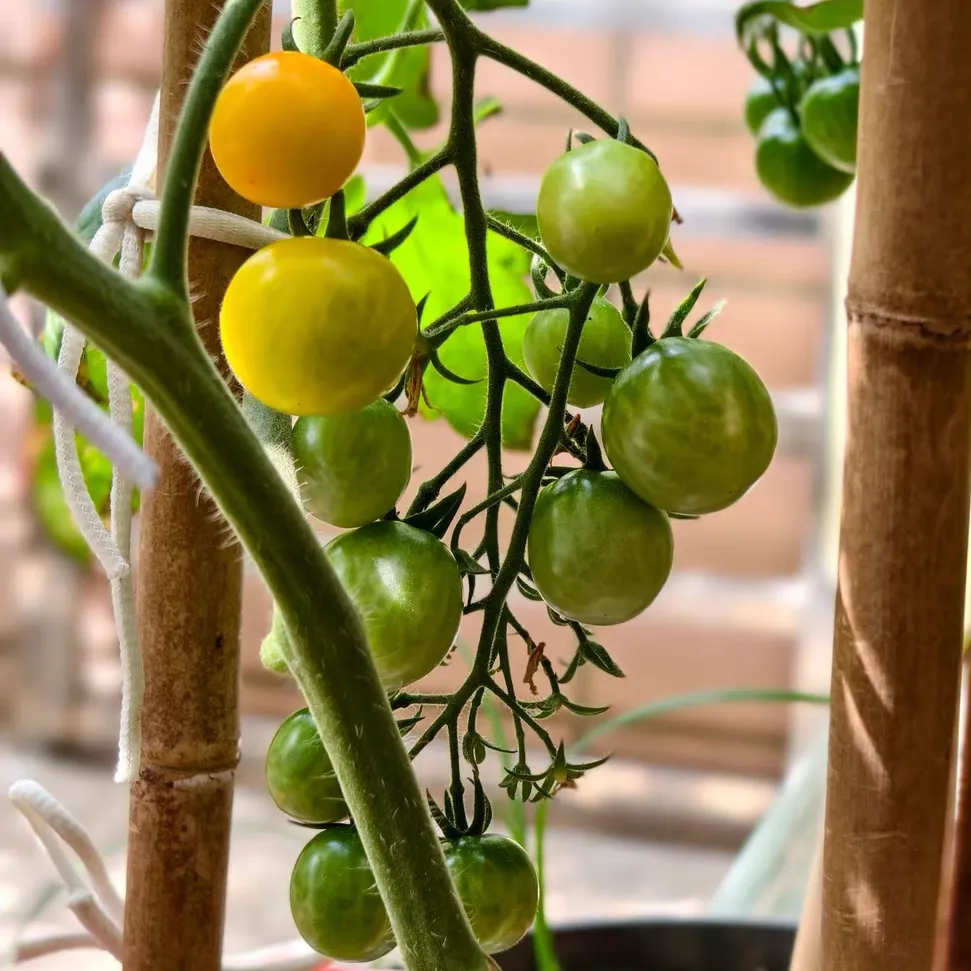Cherry tomatoes are nutrient-rich and have a unique taste, but they are prone to pests and diseases during the growth process. Mastering scientific prevention and control methods is the key to ensuring their healthy growth.
### I. Common Pests and Control
#### 1. Leafminers
- **Symptoms**: White winding tunnels appear on leaves, which gradually turn yellow and wither.
- **Control**: Hang yellow sticky traps to trap adults; use insecticides such as acetamiprid and abamectin, spraying leaves evenly with focus on the undersides and tunnel areas.
#### 2. Whiteflies
- **Symptoms**: The undersides of leaves are covered with small white insects, the plant is stunted, and sooty mold disease is induced.
- **Control**: Spray with garlic water to repel insects; hang yellow sticky traps; in severe cases, use chemical agents like imidacloprid and thiamethoxam.
#### 3. Red Spider Mites
- **Symptoms**: Yellowish-white spots appear on leaves, which dry out and turn yellow.
- **Control**: Wipe leaves with soapy water in the early stage; when the infestation is widespread, use miticides such as哒螨灵 (pyridaben) and炔螨特 (propargite), ensuring even coverage on both sides of leaves.
#### 4. Aphids
- **Symptoms**: Tender leaves curl, and green insects cluster.
- **Control**: Set up yellow sticky traps; spray with chili water to repel aphids; when infestations are heavy, use agents like acetamiprid and pymetrozine.
### II. Common Diseases and Control
#### 1. Anthracnose
- **Symptoms**: Black spots appear on leaves or fruits, which rot later with concentric ring patterns on lesions.
- **Control**: Remove and destroy diseased leaves and fruits promptly; improve ventilation; spray fungicides like mancozeb and prochloraz every 7–10 days for 2–3 times.
#### 2. Mosaic Disease
- **Symptoms**: Yellow-green mottling and curling on leaves, brown stems, and deformed fruits.
- **Control**: Choose disease-resistant varieties; apply fertilizers rationally to enhance plant resistance; control aphids to cut off transmission routes; pull out and destroy infected plants immediately.
#### 3. Blossom End Rot
- **Symptoms**: Water-soaked spots form at the fruit navel, later turning brown and soft-rotting.
- **Control**: Apply sufficient calcium fertilizer; maintain soil moisture during fruit expansion; control nitrogen reasonably; spray calcium chloride on leaves to supplement calcium.
#### 4. Powdery Mildew
- **Symptoms**: White mildew spots appear on leaves, gradually expanding.
- **Control**: Strengthen ventilation; spray fungicides like triadimefon and myclobutanil in the early stage, focusing on affected areas.
#### 5. Leaf Mold
- **Symptoms**: Yellow spots on the front of leaves, with gray-brown mold layers on the undersides.
- **Control**: In the early stage, use agents like chlorothalonil and mancozeb, spraying mainly on leaf undersides; remove residues promptly to improve ventilation.
#### 6. Gray Mold
- **Symptoms**: Water-soaked spots with gray mold layers appear on stems, leaves, and flowers.
- **Control**: Remove diseased residues; spray with chlorothalonil and procymidone in the early stage; control humidity and enhance ventilation.
#### 7. Late Blight
- **Symptoms**: Dark green water-soaked spots on leaves expand rapidly and rot under high humidity.
- **Control**: Cut off and destroy diseased branches; ensure good drainage; spray with mancozeb and dimethomorph every 5–7 days for 2–3 times.
How to Treat Sick Cherry Tomatoes

Share with
Tagged in :




Leave a Reply